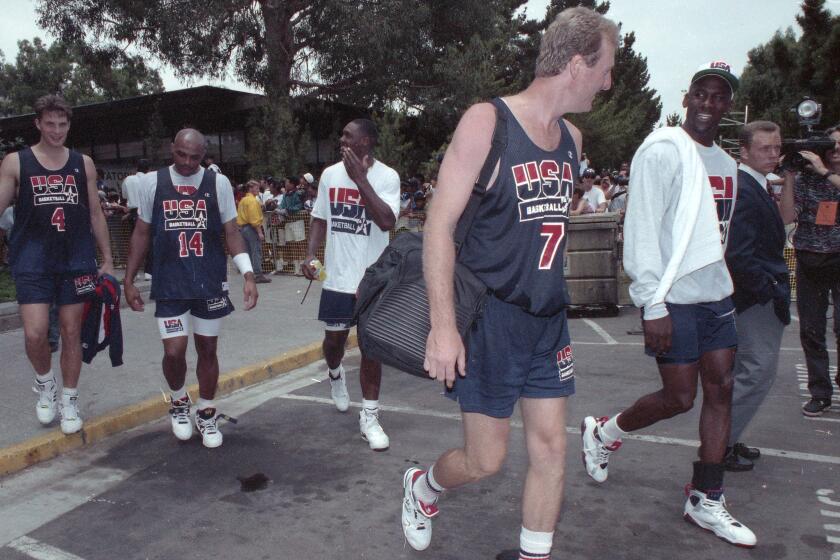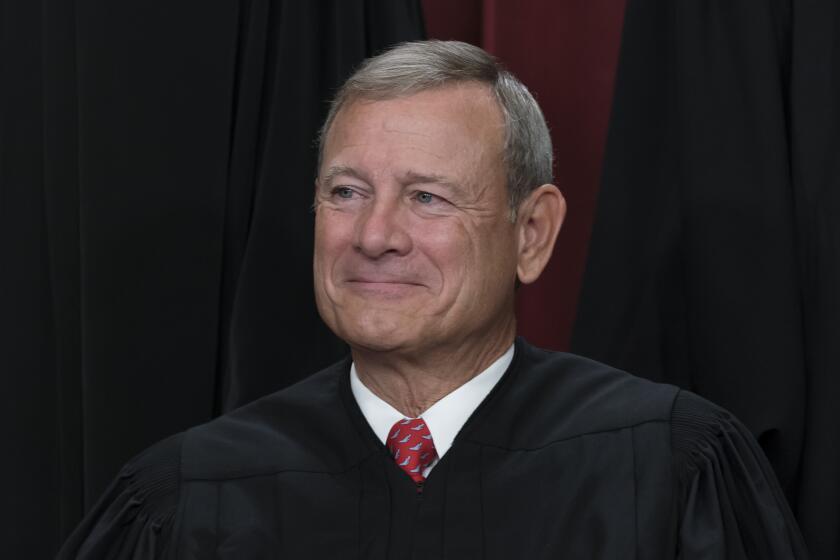Commentary: Is psychology a real science? There are two schools of thought
The social sciences are chock full of internal wars. Anthropologists are bitterly divided over the role biology plays in behavior. Sociologists are split over whether differences between men and women are profound or trivial. And postmodern theorists in a wide range of fields — ignoring the fact that their lives literally depend on the validity of the scientific method — often challenge the idea that facts can even be reliably established.
But one social science has long found itself under siege from those in the “hard sciences” — biology, chemistry, physics, etc. — who say it’s not really a science at all. What did psychology do to find itself under fire?
Alex B. Berezow, editor of Real Clear Science, laid out the psychology-isn’t-science case in 2012.
Why can we definitively say that? Because psychology often does not meet the five basic requirements for a field to be considered scientifically rigorous: 1) clearly defined terminology, 2) quantifiability, 3) highly controlled experimental conditions, 4) reproducibility, and 5) predictability and testability. ...
[The] field often yields interesting and important insights. But to claim it is “science” is inaccurate. Actually, it’s worse than that. It’s an attempt to redefine science. Science, redefined, is no longer the empirical analysis of the natural world; instead, it is any topic that sprinkles a few numbers around. This is dangerous because, under such a loose definition, anything can qualify as science.
University of Virginia psychology professor Timony D. Wilson — author of “Redirect: The Surprising New Science of Psychological Change,” printed in 2011 — strongly disagrees. He notes how psychological research debunked claims made for D.A.R.E. (Drug Abuse Resistance Education), the program pioneered by former Los Angeles Police Chief Daryl Gates in which officers went to classrooms to deliver anti-drug messages, as well as Scared Straight, the program in which foul-mouthed inmates warned at-risk youths to avoid a life of crime.
Wilson is partly right. Donald R. Lynam, now a psychologist at Purdue University, was the lead author of a 1999 study based on 1,002 sixth-graders that found while parents often had a positive opinion of D.A.R.E., when the studied cohort reached age 30, there was no evidence it worked better than standard anti-drug programs. But criminologists, not psychologists, mostly led the research that showed Scared Straight didn’t work.
Yet the problems for the psychology-is-a-science crowd go far beyond seemingly trying to take credit for the work of others. Time after time, psychologists have touted trendy, appealing theories that turned out to be dubious or worse.
The most famous recent example is the “power pose” claim of Harvard Business School social psychologist Amy Cuddy, who argued that “a person can, by assuming two simple one-minute poses, embody power and instantly become more powerful.” The photographic example often given was of Wonder Woman standing with her hands on her hips, her elbows pointed away from her body. Cuddy and collaborators Dana Carney and Andy Yap — in a paper posted in 2010 by the Association for Psychological Science — asserted that their study ...
... confirmed our prediction that posing in high-power nonverbal displays (as opposed to low-power nonverbal displays) would cause neuroendocrine and behavioral changes for both male and female participants: High-power posers experienced elevations in testosterone, decreases in cortisol, and increased feelings of power and tolerance for risk; low-power posers exhibited the opposite pattern.
The study became the basis of one of the most popular TED Talks of all time. But the broad claims made by Cuddy weren’t consistently reproduced in follow-up studies. By 2015, her co-author Cuddy had disavowed the 2010 study as being intrinsically flawed.
While Cuddy’s flap may have had a higher profile in the news media, the debate over the power of the “priming” phenomenon had more fallout within psychology. The Nature journal offered this primer in 2013:
The theory holds that behavior can be influenced, or “primed,” by thoughts or motives triggered unconsciously ...
The concept has been around for decades. It was a core thesis of “The Hidden Persuaders,” journalist Vance Packard’s 1957 book about how the advertising industry sought to manipulate consumers. It is key to the algorithms that advertisers use to decide what to sell us as we use our phones and electronic devices.
But over the decades it’s evolved into elaborate theories about social priming, “the study of how subtle cues can unconsciously influence our thoughts or behavior,” as Nature put it — allegedly influencing test scores, moral reasoning, and even, yes, gait. One 1996 study claimed people walked more slowly after hearing words related to stereotypes about the elderly.
By 2012, however, the reproducibility problem cited by Real Clear Science’s editor that undid the “power pose” fad was laying social priming theories to waste. Daniel Kahneman, a Nobel-winning psychologist from Princeton University, warned in a statement that this problem was a “train wreck looming” that could haunt the academic careers of graduate students who were part of later-discredited priming studies. Kahneman’s admonition was part of what The New York Times last year called “a methodological reform movement” in social psychology with a “new, enthusiastic spirit of self-flagellation,” that may be leading to more rigor in research.
Now a new study, published this month, could lead not only to more psychologists’ “self-flagellation” but also to a crisis of conscience.
Writing in the March-April 2018 edition of the International Journal of Law and Psychiatry, Lindsey Wilson College criminologist Allen Copenhaver and Stetson University psychologist Christopher J. Ferguson cite evidence that the American Psychological Association’s 2005 declaration that there was a “confirmed” link between playing violent video games and aggressive, antisocial behavior was undermined by research the APA chose to ignore. This matters deeply because the APA’s assertion was cited endlessly by lawmakers nationwide who sought to ban teenagers from buying violent video games — and California legislators who actually did so by outlawing some games.
Copenhaver and Ferguson cite example after example of studies which contradict the APA’s claim. Yet the APA instead heeded the lobbying of authors who had previously published studies asserting a link between video games and antisocial behavior — academics who had a vested interest in having their theses boosted. But the authors also suggested another motive for the association: In 2005, when the debate about violent video games was at its peak, the APA wanted a piece of the regulatory action. It recommended “the development and dissemination of a content-based rating system that accurately reflects the content of video games and interactive media” — perhaps using an APA “seal of approval.”
Copenhaver and Ferguson don’t just use this history to raise questions about whether self-promotion, not science, was guiding the APA. They also use the facts to show the American Psychological Association’s cluelessness about video games, noting that the Entertainment Software Rating Board had evaluated games since 1994.
Since 2005, harsh claims about the effects of violent video games have been steadily debunked, both by new studies and by common sense. Two decades of intense playing of violent video games by millions of Americans has been accompanied by a historic drop in violent crime. In 2011, a U.S. Supreme Court with a conservative majority shrugged off the claimed link, throwing out California’s law banning minors from buying violent games.
And maybe that’s what you should do the next time a new psychology fad emerges with bold claims — dismiss it.
Unless you hear the theory directly from another person and are in the mood for some trolling. Then you can break out your “power pose” while shaking your head.
Reed, whose most violent video game is the boxing in Wii Sports, is deputy editor of the editorial and opinion section. Twitter: @chrisreed99. Email: chris.reed@sduniontribune.com. Column archive: sdut.us/chrisreed.
Twitter: @sdutIdeas
Facebook: San Diego Union-Tribune Ideas & Opinion
Get Weekend Opinion on Sundays and Reader Opinion on Mondays
Editorials, commentary and more delivered Sunday morning, and Reader Reaction on Mondays.
You may occasionally receive promotional content from the San Diego Union-Tribune.












